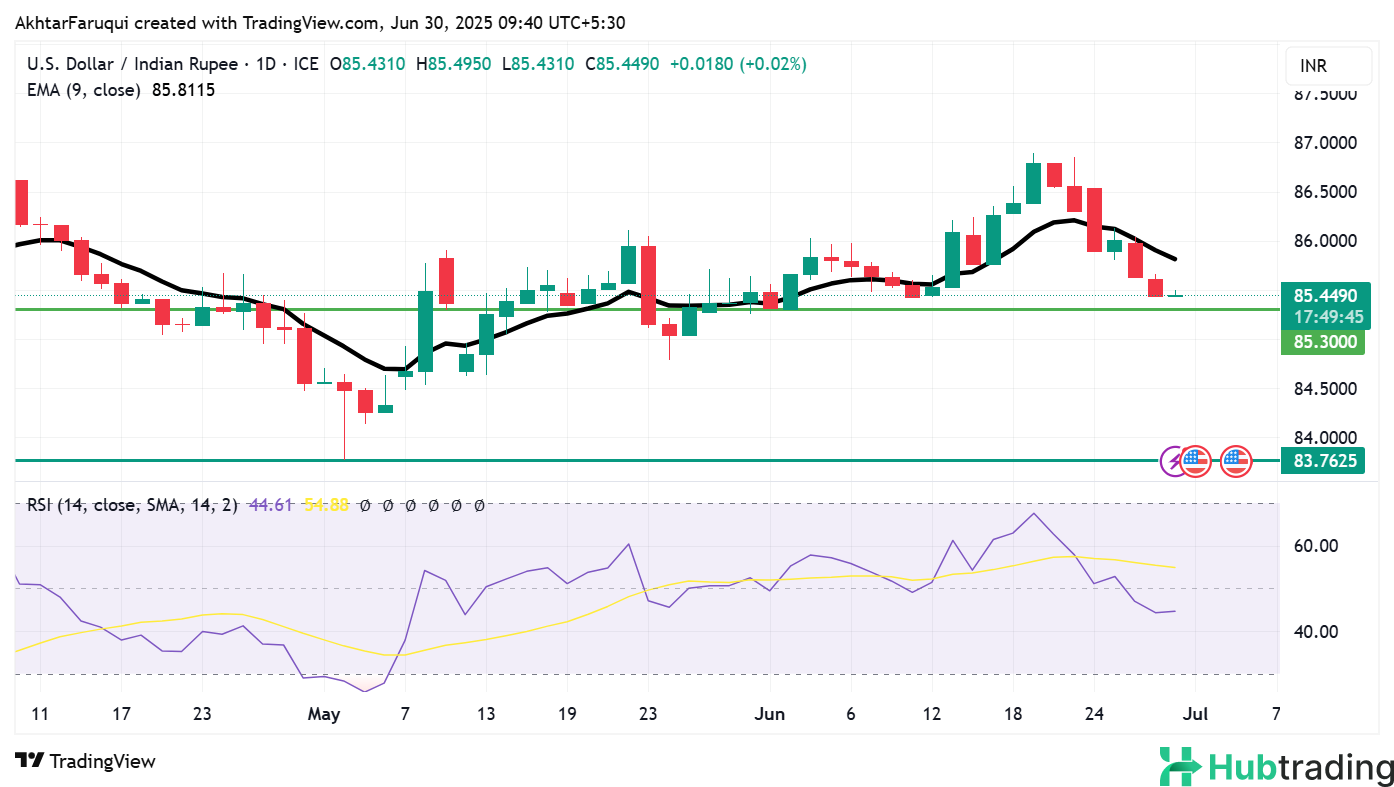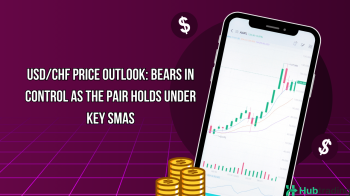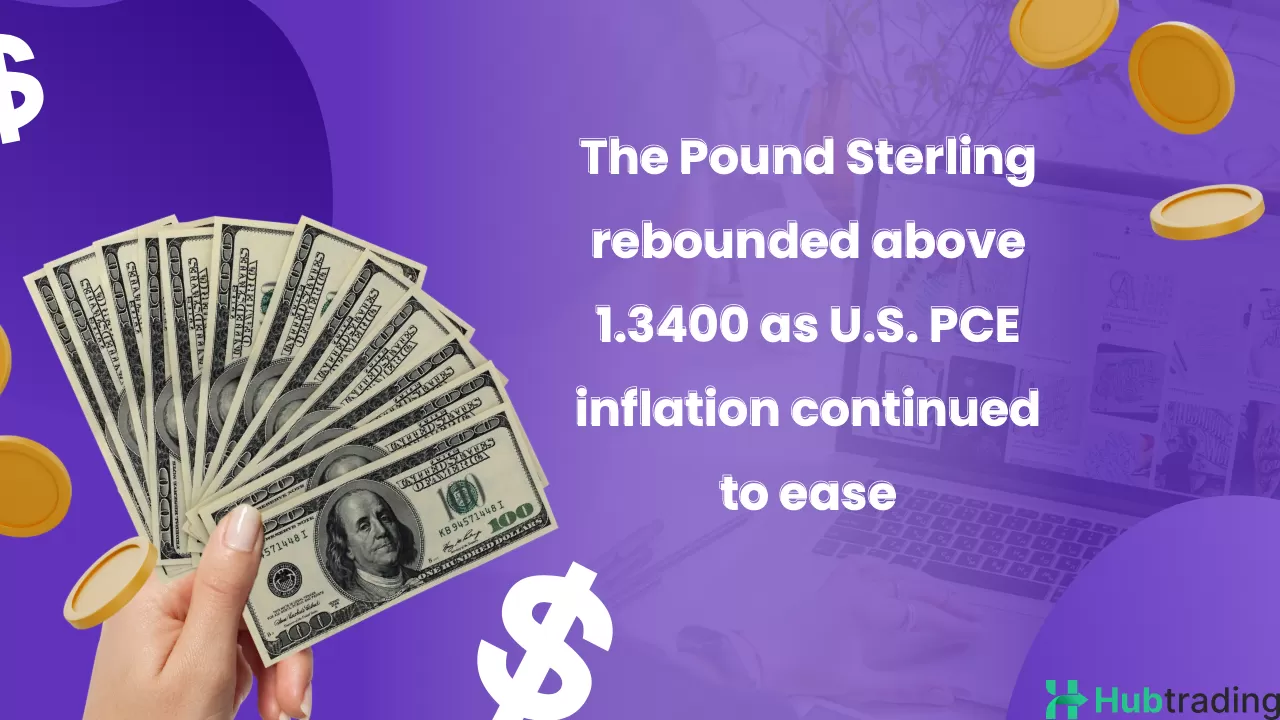-
The Indian Rupee softens ahead of key economic data releases scheduled for Monday.
-
Indian stock markets retreat as investors engage in profit-taking following Friday’s eight-month highs.
-
The US Dollar faces headwinds amid growing expectations of a Federal Reserve rate cut in September.
The Indian Rupee (INR) weakened against the US Dollar (USD) on Monday, giving back gains from the previous two sessions. Equity markets also pulled back, with the NIFTY 50 trading around 25,550, down 0.33%, and the BSE SENSEX at 83,770, lower by 0.34%. The declines were driven by profit-taking after both indices hit eight-month highs on Friday. Additionally, concerns over potential Foreign Institutional Investor (FII) outflows have added pressure on the Rupee.
The USD/INR pair also climbed amid rising crude oil prices, which tend to negatively impact the INR, as India is one of the world’s largest crude oil importers. At the time of writing, West Texas Intermediate (WTI) crude is trading near $64.70 per barrel. However, the upside for oil prices may be limited by easing concerns over supply disruptions following a Middle East ceasefire, and OPEC+ plans to increase output by 411,000 barrels per day in August, following a similar hike in July.
Investors are awaiting key Indian economic data due Monday, including figures on Industrial Output, Manufacturing Output, and the Trade Deficit, which could further influence INR movement.
Despite the recent weakness, the Indian Rupee has previously gained support from strong foreign inflows, with FIIs purchasing Rs 8,915 crore worth of Indian equities so far in June. Analysts say this reflects growing confidence in India's economic outlook and the resilience of its financial markets.
Daily Digest Market Movers: Indian Rupee Slips as US Dollar Holds Steady
- The Indian Rupee (INR) edged lower on Monday, while the US Dollar traded relatively stable. The US Dollar Index (DXY), which tracks the greenback against six major currencies, is slightly lower around 97.20 at the time of writing. Market participants are awaiting this week’s key US employment data, which could provide fresh insights into the Federal Reserve’s (Fed) policy direction.
- The upcoming US Nonfarm Payrolls (NFP) report is expected to show a slowdown in hiring, with a projected gain of 110,000 jobs in June, down from 135,000 in May. Estimates range from 75,000 to 140,000. Unemployment is forecast to rise slightly to 4.3% from 4.2%, suggesting some softening in the labor market. This, combined with rising expectations for a Fed rate cut in September, could weigh on the US Dollar.
- On Friday, data revealed that US Personal Spending fell unexpectedly in May—the second monthly decline this year—while Personal Income dropped by 0.4%, the largest decline since September 2021. These signs of weakening consumer activity further fuel rate cut speculation.
- Political developments may also add uncertainty to the Fed’s future. According to the Wall Street Journal, US President Donald Trump could announce a replacement for Fed Chair Jerome Powell as early as September or October, with former Fed Governor Kevin Warsh and NEC Director Kevin Hassett reportedly under consideration. However, Chicago Fed President Austan Goolsbee reassured markets that political dynamics would not influence monetary policy decisions, even if a “shadow chair” is named.
- Fed Chair Jerome Powell, speaking last week, acknowledged that the current administration’s tariff policies could result in a one-off rise in prices, but warned they could also spark more sustained inflationary pressures, making the Fed’s rate path more delicate.
- Meanwhile, in India, a Reuters poll projects GDP growth to slow slightly to 6.4% for the fiscal year ending in March, down from 6.5% last year. The projection comes despite the Reserve Bank of India (RBI) front-loading interest rate cuts to stimulate growth.
Technical Analysis: USD/INR Holds Near 85.50 with Bearish Bias

USD/INR is trading with modest gains near 85.50 on Monday. The pair remains below the nine-day Exponential Moving Average (EMA), indicating weakened short-term bullish momentum.
The 14-day Relative Strength Index (RSI) continues to hover below the neutral 50 level, reinforcing the overall bearish tone.
On the downside, immediate support lies at the monthly low of 85.30. To the upside, the nine-day EMA at 85.81 serves as the first resistance, which the pair would need to break to signal renewed bullish strength.





